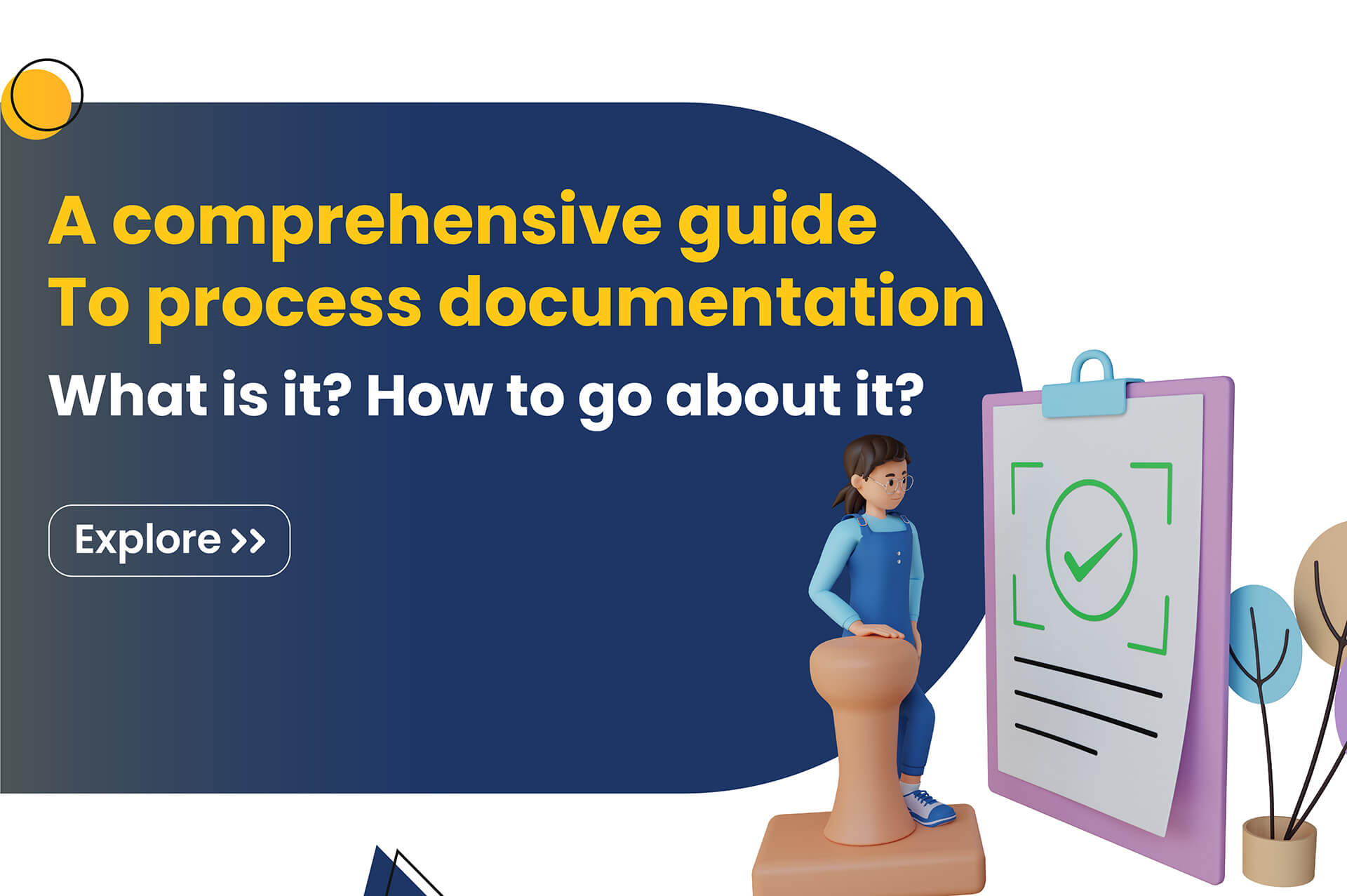Process documentation is a method of maintaining a comprehensive record of all the steps involved in executing a particular process. It gives a complete picture of how a task or procedure should be carried out from beginning to end for the desired outcome.
Why should you do it?
A. It saves time and money: A clear and standardized process can help organizations reduce inefficiencies and costly mistakes.
B. It helps identify gaps: Gaps or loopholes are easy to identify when a process is thoroughly documented on paper. This way, process documentation opens up avenues for continuous improvement.
C. It creates a cohesive environment: Different teams and departments can collaborate better with standardized processes.
D. It improves onboarding experience: Process documentation makes it easier for new employees to learn and understand the existing workflow. This leads to faster integration.
E. It enhances efficiency: Highlighting the bottlenecks and process documentation helps streamline workflows and enhances employee productivity.
F. It opens up avenues for improvement: Regular review of documented processes helps understand
So, how do you initiate process documentation?
First of all, one should involve all the stakeholders in the process. After understanding each other’s requirements and concerns, procedures can be finalized. The team that finalizes processes should comprise of:
Internal Team: These are members who execute the process. It is important for them to understand the intricacies and nitty-gritty of the process for proper implementation.
Stakeholders: Involve groups and individuals who are going to be affected by the set processes. Their feedback and insights are valuable for achieving the goal.
Outsiders: External consultants and HR experts can be involved for valuable insights and unbiased perspectives if required.
Step-by-step approach for effective process documentation:
Step 1: Define the scope:
What do you aim to do with the process? It is important to define its scope and set the goals you wish to achieve by the process documentation.
Step 2: Information collection:
Gather necessary information from involved stakeholders before determining the steps.
Step 3: Start the documentation:
After understanding the scope and requirements, start with process documentation. Mention steps in sequential order.
Step 4: Communicate with others:
Once you document the process, communicate it with other stakeholders by creating a flowchart or a presentation.
Step 5: Ask for feedback.
Share documentation with relevant stakeholders and ask for their feedback to identify areas of improvement.
Step 6: Process optimization:
Include relevant feedback, make necessary changes in the process and optimize it.
Step 7: Make it accessible:
Once you finalize the process, make the document available to all the stakeholders so they can refer to it whenever required.
